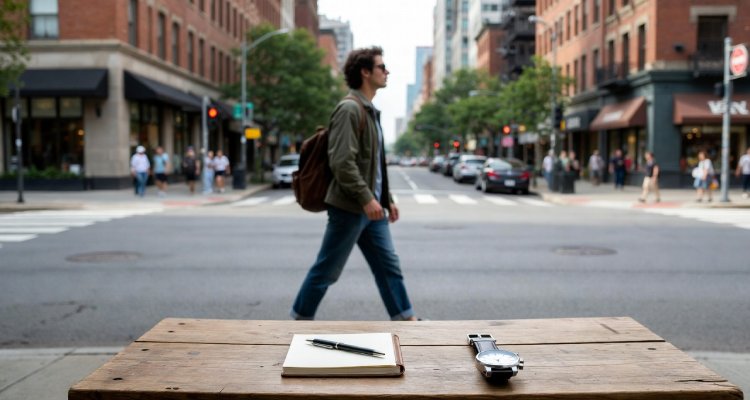Minimalism Isn’t Minimal: The High Cost of Living Simple
While minimalism promises clarity and simplicity, adopting the lifestyle often comes with hidden financial, emotional, and social costs that challenge its image.
Introduction: The Price of Less
At first glance, minimalism seems like a path to peace—less clutter, fewer distractions, and more meaning. It’s a lifestyle idealized by Instagram-ready aesthetics, clean white spaces, and curated capsule wardrobes. But behind the polished veneer of “living with less” lies an uncomfortable truth: minimalism, for many, isn’t minimal at all. In practice, the pursuit of simplicity can come with a hefty price tag—financially, emotionally, and socially.
Context & Background: From Counterculture to Commodity
Minimalism began as a countercultural movement—rooted in Buddhist philosophies, post-war austerity, and anti-consumerist ideals. Its modern revival, however, took shape in the 2000s with influencers like Marie Kondo, The Minimalists, and Instagram personalities turning decluttering into a profitable industry.
What started as a rejection of excess has morphed into a lifestyle brand. Companies market “minimalist” furniture at premium prices. Social media influencers monetize pared-down aesthetics. Minimalism, once about letting go, now requires careful—and costly—curation.
Main Developments: The Hidden Costs of a Simple Life
1. Minimalist Aesthetic = Maximalist Budget
Living minimally doesn’t mean buying nothing; it often means buying better—and that can be expensive. A single sustainably made chair or an artisanal linen robe can cost hundreds, if not thousands, of dollars. Opting for ethically sourced goods, eco-friendly brands, or high-design basics often comes with a steep markup.
For instance, a standard capsule wardrobe, designed to be timeless and versatile, might consist of ten or fifteen high-quality pieces. But each item—say a $250 coat or $150 sneakers—represents an upfront investment many can’t afford.
2. Decluttering = Discarding Value
“Tidying up” often means throwing out usable items in the pursuit of visual harmony. This can create a cycle of waste: people discard items that don’t “spark joy,” only to replace them later at great cost. Ironically, the push to live with less can lead to more spending—not less.
3. Space to Be Minimal
Being minimalist often assumes you have space, time, and resources to organize and store wisely. It’s much easier to live with fewer items if you own a large, well-designed home with built-in storage solutions—less so in a cramped apartment where every inch matters.
4. Minimalism Demands Time
From researching eco-friendly brands to curating your possessions, the minimalist lifestyle demands attention, planning, and effort. For those juggling multiple jobs or family demands, minimalism’s mental labor becomes just another burden.
Expert Insight & Public Reaction
“Minimalism has been gentrified,” says Dr. Rachel Watkins, a cultural anthropologist at American University. “It’s no longer just about detaching from consumerism—it’s now a status symbol. The ‘right kind’ of minimalism is curated, expensive, and often exclusionary.”
Online, reactions are mixed. On Reddit and TikTok, users voice frustrations about the “elitism of minimalism,” pointing out how influencers advocate simplicity while showcasing $4,000 couches and designer yoga mats. A viral post on X (formerly Twitter) summed it up: “Minimalism used to mean living with less. Now it just means owning 10 expensive things instead of 100 cheap ones.”
Impact & Implications: Who Gets Left Out?
Minimalism, as marketed today, is often inaccessible to those living paycheck to paycheck. For lower-income families, holding on to hand-me-downs and affordable bulk purchases isn’t hoarding—it’s survival. Encouraging them to “declutter” can feel tone-deaf.
Additionally, minimalism’s aesthetic is deeply Westernized and individualistic. In many cultures, communal living, inherited items, and visual abundance are symbols of family, memory, and identity. Forcing minimalist ideals onto these spaces risks erasing cultural nuance.
Meanwhile, the wellness industry continues to push minimalist branding—linking a sparse lifestyle with inner peace. This ignores the fact that true mental clarity often comes not from clean countertops, but from secure housing, stable income, and supportive community.
Conclusion: Rethinking the Meaning of “Less”
Minimalism doesn’t have to mean expensive furniture and monochrome outfits. It can be a philosophy of intention—choosing what serves you, letting go of what doesn’t, and resisting the pressure to constantly consume. But as it currently stands, the minimalist lifestyle has drifted far from its humble roots, becoming another domain where privilege is quietly rewarded.
For minimalism to be truly meaningful—and inclusive—it must move beyond aesthetics and status. It must become less about buying the right things and more about building the right values.
Disclaimer: This article is for informational purposes only and does not constitute financial or lifestyle advice. Readers are encouraged to consider their individual circumstances before adopting any lifestyle changes.











